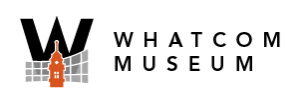National Geographic’s Greatest Wildlife Photographs
/in Current Exhibitions /by Elizabeth MooreMarch 9, 2024 - September 8, 2024
Lightcatcher Building
Witness some of the most surprising animal behavior in Greatest Wildlife Photographs, a new exhibition from National Geographic. The very best wildlife pictures from the pages of National Geographic magazine have been chosen to be displayed at the Whatcom Museum. Curated by renowned nature picture editor Kathy Moran, this exhibition is a celebratory look at wildlife with images taken by National Geographic’s most iconic photographers such as Michael “Nick” Nichols, Steve Winter, Paul Nicklen, Beverly Joubert, David Doubilet and more. Showcasing the evolution of photography, the images convey how innovations such as camera traps, remote imaging, and underwater technology have granted photographers access to wildlife in their natural habitat.
For 115 years, National Geographic has pioneered and championed the art of wildlife photography, and captivated generations of engaged audiences with a steady stream of extraordinary images of animals in nature. From the very first such image to appear – a reindeer in 1903 – National Geographic Society’s publications have broken new ground and push the bar higher again and again, establishing an unmatched legacy of artistic, scientific, and technical achievement. These are the Greatest Wildlife Photographs.
About the National Geographic Society
The National Geographic Society is a global nonprofit organization that uses the power of science, exploration, education and storytelling to illuminate and protect the wonder of our world. Since 1888, National Geographic has pushed the boundaries of exploration, investing in bold people and transformative ideas, providing more than 15,000 grants for work across all seven continents, reaching 3 million students each year through education offerings, and engaging audiences around the globe through signature experiences, stories and content. To learn more, visit www.nationalgeographic.org or follow us on Instagram, Twitter and Facebook.
Also coming to the Whatcom Museum in 2024:
The Whatcom Museum acknowledges that we gather on the traditional territory of the Lhaq’temish – Lummi People – and the Nuxwsá7aq – Nooksack People – who have lived in the Coast Salish region from time immemorial. The Museum honors our relationship with all of our Coast Salish neighbors and our shared responsibilities to their homeland where we all reside today.
The Whatcom Museum is proud to host National Geographic Explorer and acclaimed wildlife photographer Ronan Donovan at the Mount Baker Theatre. His work is also on display in National Geographic’s Greatest Wildlife Photographs, on view in the Lightcatcher building March 9 – September 8, 2024. TICKETS ON SALE SOON!
National Geographic Related Events:


































